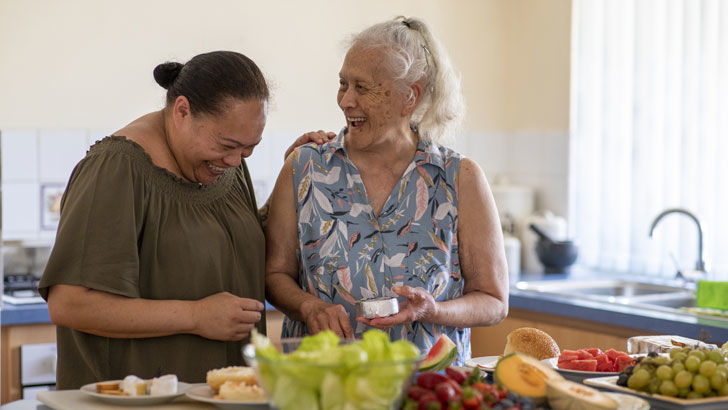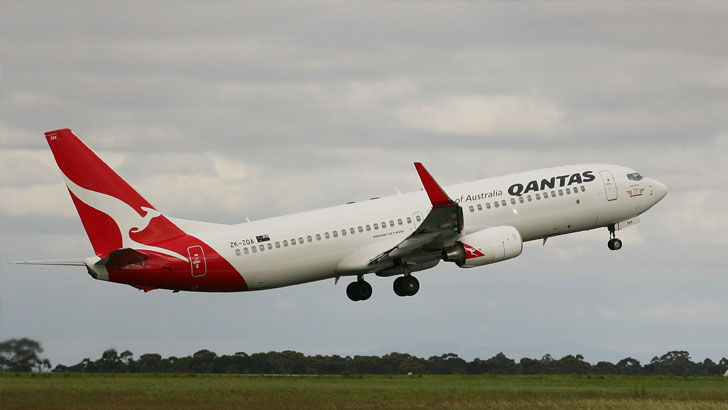Budget winners and losers: Here's who will be better off after last night
By David Thornton
The 2021-22 Federal Budget is anything but thrifty, but that doesn't mean that the rising tide lifts all boats.
As with all Budgets, regardless of size, there are winners and losers.
Here's what you need to know.
Winners
Low and middle income earners
The low and middle income tax offset (LITMO), colloquially known as 'the lamington', has been extended for another year, so an estimated 10.2 million Aussies will be $1080 better next year.
But Mark Chapman, director of tax communications at H&R Block, says it's been a bit mischaracterised.
"Let's call this what it is and ignore the government spin; this isn't a tax cut, its simply the deferral of a tax rise," he says.
"Nobody should be counting the extra dollars in next year's pay packets because there aren't any; the tax burden for low and middle income individuals next year is exactly the same as it was this year."
Homebuyers
The family home guarantee has been extended by another 10,000 spots, allowing people to put down a deposit of 5%.
A further 10,000 home loan guarantees will be provided for single-parent households, allowing them to put down a home loan deposit of 2%.
Finally, the maximum amount of voluntary contributions that can be released under the First Home Super Saver scheme has been upped from $30,000 to $50,000.
"Whether the measures went far enough to support first home buyers remains to be seen," says Homeloanexperts.com.au CEO Alan Hemmings.
"Australia's property prices are likely to continue rising for the foreseeable future and similar schemes in the past haven't been widely adopted or clearly understood by their target audiences. With the RBA making it clear that cooling the property market isn't their focus, a lot of the problems that cause price inflation are still going to be an issue."
Women
Well, kind of.
For the first time the Budget included a Women's Budget Statement. The $450 monthly threshold to receive the superannuation guarantee will be abolished from July 1, which is estimated to benefit 200,000 women.
"Our calculations show that by abolishing the threshold for paying the super guarantee, a female worker at age 30 who drops to part-time work, due to family caring responsibilities, could receive up to an extra $6,924 at age 40," says Colonial First State general manager Kelly Power.
"This difference increases to $11,700 in today's dollars due to compounding investment returns by retirement at age 67."
The Budget also pledges $1.1 billion for women's safety, which will be spent on emergency accommodation, legal assistance, counseling and cash payments for those experiencing domestic violence.
The childcare subsidy will also receive a $1.7 billion boost, which will help out about 250,000 families. On the other hand, the Mitchell Institute notes that around a million families currently have children in care, so 750,000 families won't be affected.

Under the changes, the subsidy will increase 30% to a maximum subsidy of 95% of fees paid for second and subsequent children.
Now, a family earning $110,000 a year will have the subsidy for their second child increase from 72% to 95%, saving them $95 a week for four days of care.
The home loan guarantee outlined above will also help women somewhat.
"The policy seeks to build gender and socioeconomic equality by offering more opportunities for homeownership which, you would expect, would lead to greater economic security which would be very important as people age," Zareh Ghazarian, from the School of Social Sciences at Monash University, tells Money.
"Women tend to have less superannuation than men, so having such housing policies will go some way to provide greater social and economic security."
Businesses
Trickle-down economics is alive in well in this Budget, with the loss and carry-back rules extended to 2023. This means that businesses with turnover up to $5 million can write off losses incurred during COVID against profits made on or before 2018-19.
In addition, businesses with turnover up to $5 billion will be able to write off the full cost of depreciating assets in the first year they're used.
"The main business tax change out of this Budget is the one-year extension to temporary full expensing of depreciating assets and tax loss carry-backs.
"The main business tax change out of this Budget is the one-year extension to temporary full expensing of depreciating assets and tax loss carry-backs," says Chartered Accountants ANZ tax leader Michael Croker.
Aged care
Aged care is set to get a $17.7 million boost over five years, in the wake of the aged care royal commission.
Eighty thousand extra home care packages will made available over the next two years, with 12,000 of those set aside for those needing the highest level of care. In addition, 33,800 training places for aged carers will be made available.
Health Minister Greg Hunt has coined it as the "largest package in Australia's history".
Losers
The federal balance sheet
It turns out the fiscally conservative liberal government isn't afraid of spending after all.
Last night the government rolled out a $161 billion deficit despite an official deficit of $161 billion for 2020-21. Granted, this 2020-21 result is much better than the $213.6 billion forecast in October last year, but still massive, and is forecast to bring gross debt to an eye-watering $1.2 trillion.
Treasurer Josh Frydenberg has gone full Keynes, believing that lifting employment through counter cyclical spending will have a multiplier effect that will pay tomorrow for the spending of today.
"Building on lower-than-expected COVID outlays, the Budget banks on economic growth to gradually restore depleted coffers whilst simultaneously boosting spending to address a range of pressing social issues," says Chartered Accountants ANZ Tax Leader Michael Croker.
"Getting unemployment down to 4.75% by 2022-23 is this Budget's main objective, a target which is also key to Reserve Bank deliberations on monetary policy.
Tourism
Those looking to jump on international flights were hanging out for word on when the borders would open, but they were left with more questions than answers.
"Inbound and outbound international travel is expected to remain low through to mid-2022, after which gradual recovery in international tourism is assumed to occur," the Budget papers read.

Of course, this will all depend on the vaccine rollout and overseas conditions.
"The borders will reopen when it's safe to do so, and when they do, net overseas migration will increase, including skilled workers," Mr Frydenberg told The Sydney Morning Herald and The Age.
Arts and culture
The arts were paid lip service in this year's Budget, with $222.9 million to be provided over two years from 2020-21.
Broken down, this includes $125.6 million over two years from 2020-21 to support events, $50.8 million in 2021-22 for the local film and television sector to secure funding to commence productions, and $20.0 million over two years from 2020-21 to support cinemas.
Chickens
Poultry has been left with egg on its face, with 1.1 cents to be levied on every laying hen from July 1, 2021. The money will be used to reimburse the government for costs paid on behalf of the egg industry in relation to three emergency responses to avian influenza in Victoria in 2020.
Get stories like this in our newsletters.



